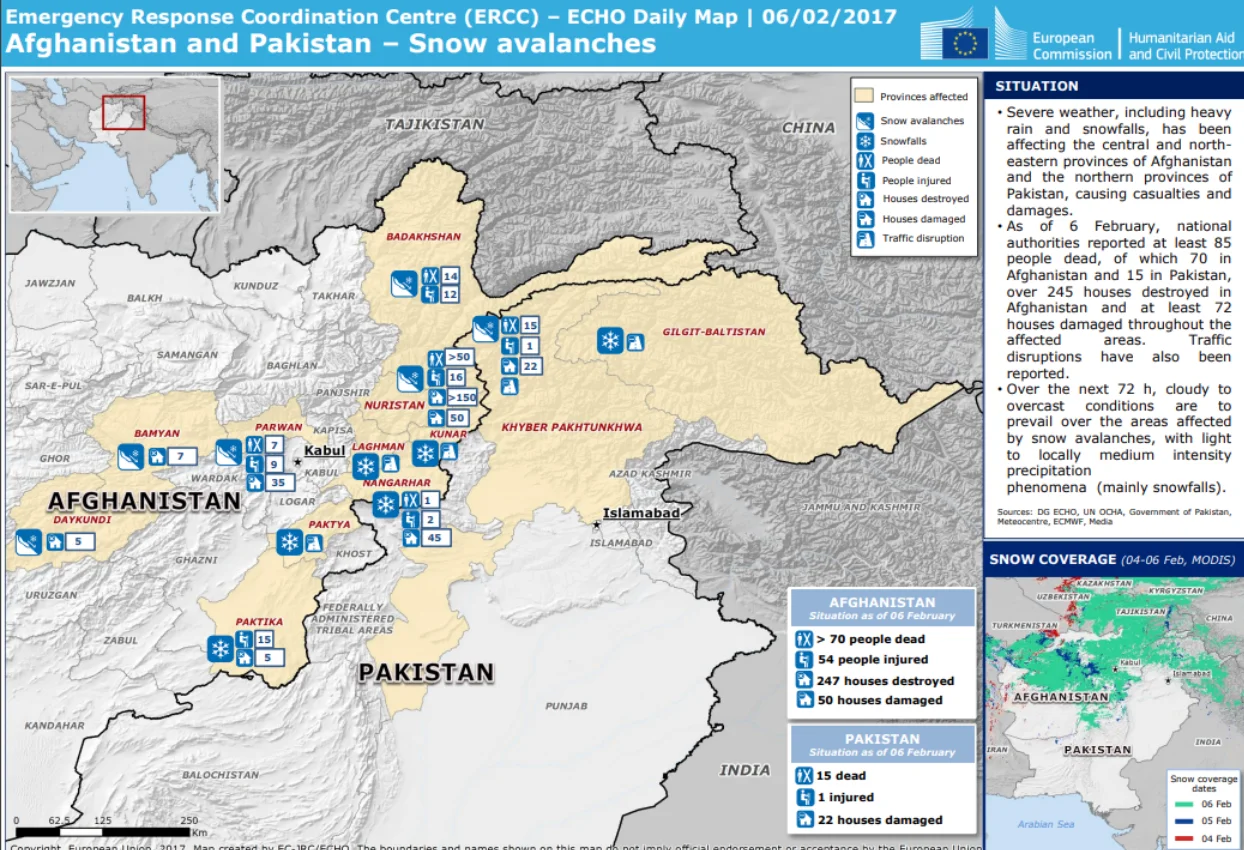
Extreme conditions that caused the disastrous 2017 Afghanistan avalanches
The conditions caused complications and delays in rescue efforts.
This Day In Weather History is a daily podcast by Chris Mei from The Weather Network, featuring stories about people, communities and events and how weather impacted them.
--
Between Feb. 4 and 6, 2017, a series of avalanches hit the Afghanistan-Pakistan border. Though areas in both countries were affected, provinces in Afghanistan were destroyed.
The avalanches caused more than 100 deaths.
The mountainous regions of eastern Afghanistan experienced extreme snow, which set off a series of avalanches. Some areas received up to 2.5 metres of snow, which complicated avalanche rescue efforts.
The extreme winter conditions also affected 22 out of the 34 provinces in Afghanistan. This added to barriers to aid.
Some areas were able to get assistance earlier on, receiving emergency dry food, cash assistance, medical supplies and health kits.
Helicopters tried to provide humanitarian supplies to the remote areas, but the weather would not allow them to land until Feb. 7.
The Afghani government deployed teams to help those who were impacted. The United Nations and Red Crescent also sent aid.

Courtesy of reliefweb.int
Houses and buildings were destroyed by the natural disaster, but most of the homes were constructed from clay and mud bricks.
Red Crescent volunteers provided those in need with sleeping bags, blankets, tents, and tarps. Overall, as reported by the Afghan Red Crescent Society, around 15,702 people were affected by the avalanches.
To hear more about the 2017 Afghanistan avalanches, listen to today's episode of "This Day In Weather History."
Subscribe to 'This Day in Weather History': Apple Podcasts | Amazon Alexa | Google Assistant | Spotify | Google Podcasts | iHeartRadio | Overcast'
Thumbnail courtesy of Unsplash









